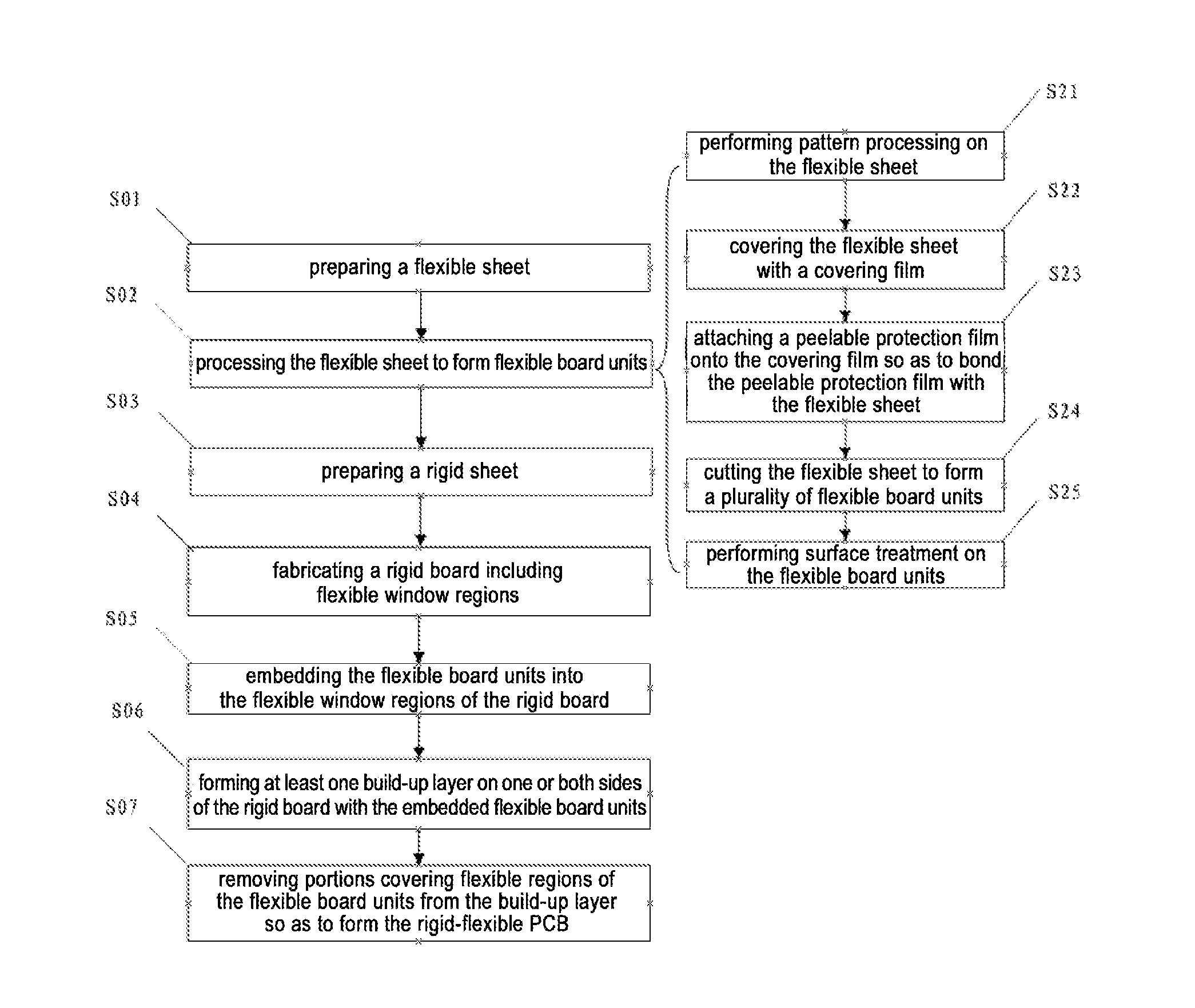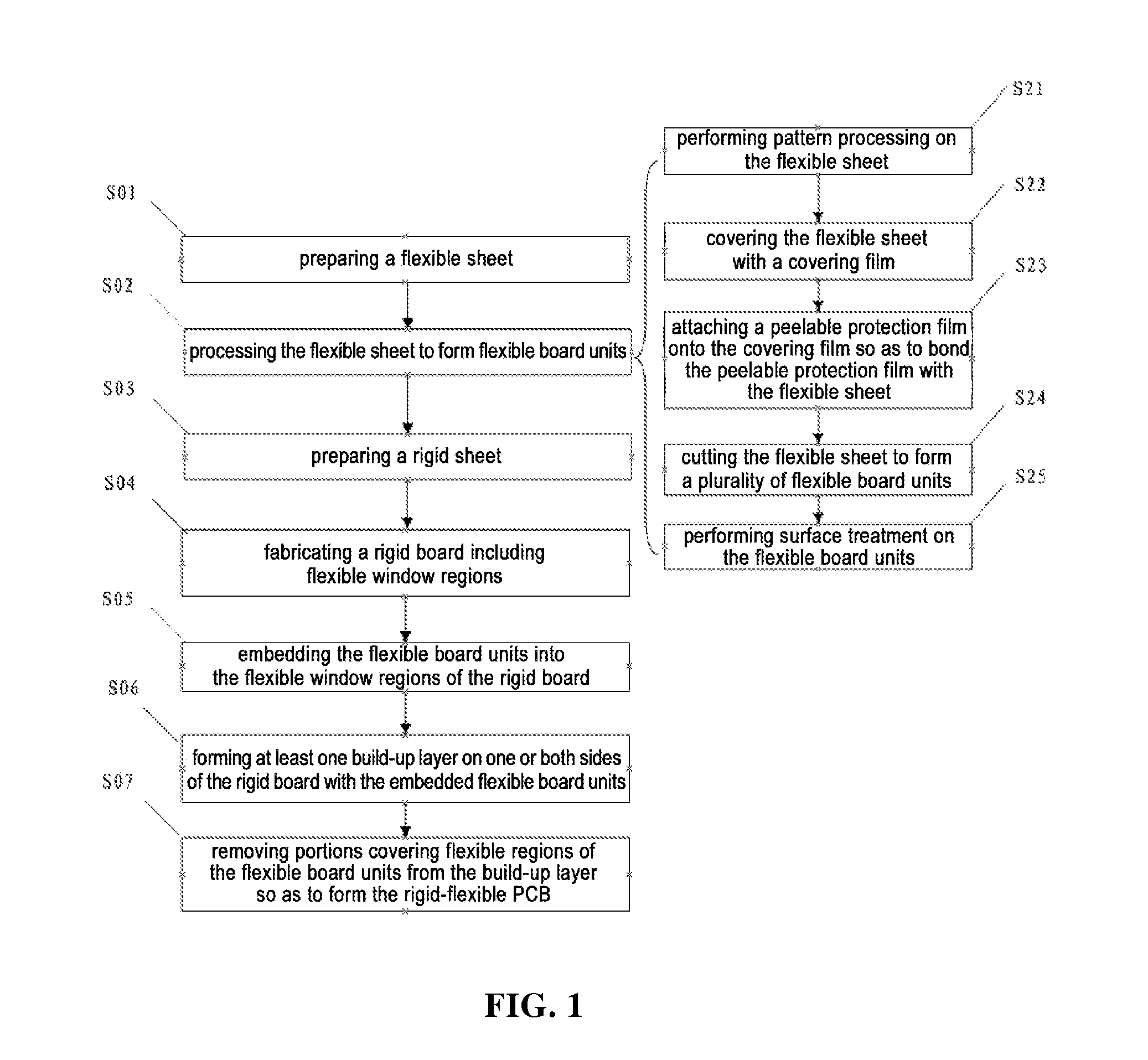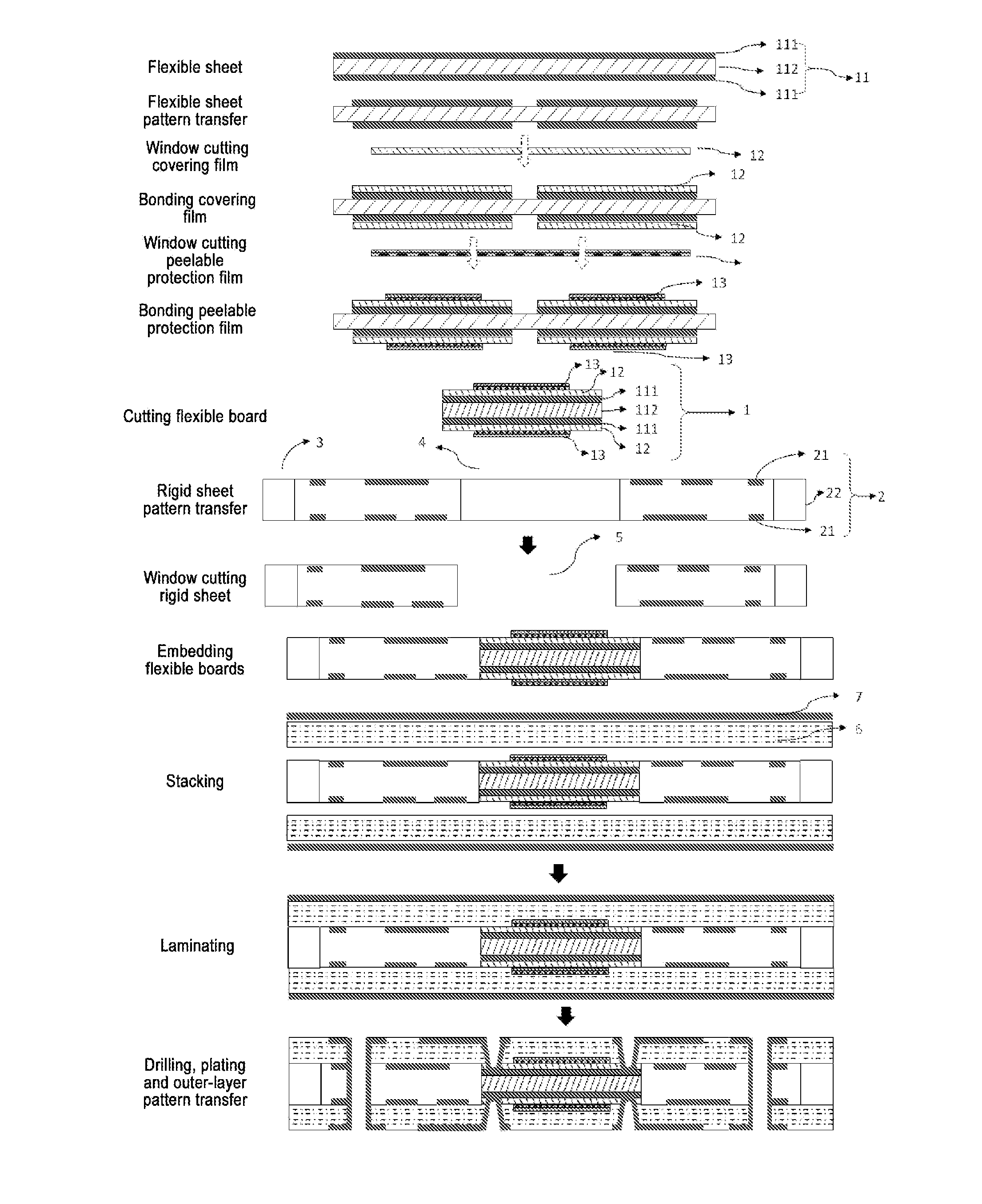Fabrication method of a rigid-flexible circuit board and rigid-flexible printed circuit board
a technology of printed circuit board and fabrication method, which is applied in the direction of printed circuit manufacturing, printed circuit assembling, printed circuit aspects, etc., can solve the problems of increasing the virtually fabrication cost of electronic devices (or products) using such pcbs, the waste of flexible sheets of all electronic products, and the relatively high fabrication cost of fccls. achieve the effect of small expansion and contraction variation, small overlap area, and significant reduction of flexible sheet was
- Summary
- Abstract
- Description
- Claims
- Application Information
AI Technical Summary
Benefits of technology
Problems solved by technology
Method used
Image
Examples
embodiment 1
[0053]The circuit board fabricated in this embodiment is a Plus One HDI rigid-flexible PCB, and FIG. 2 is a diagram showing processing steps of fabricating the Plus one HDI rigid-flexible PCB. As illustrated in FIG. 1, the fabrication method specifically includes the following steps:
[0054]Step S01: preparing a flexible sheet. In this embodiment, the flexible sheet 11 includes a flexible sheet dielectric layer 112 and flexible sheet conductive layers 111 provided at both sides of the flexible sheet dielectric layer 112.
[0055]Step S02: processing the flexible sheet 11 to form small flexible board units. Each small flexible board unit is divided into a rigid-flexible region and a flexible region.
[0056]The step of processing the flexible sheet specifically includes:
[0057]Step S21: performing pattern processing on the flexible sheet. That is, transferring a wiring pattern that needs to be arranged in the flexible board onto the flexible sheet conductive layers 111 on both sides of the fl...
embodiment 2
[0079]A circuit board fabricated in this embodiment is a high plus (Plus two or higher) HDI rigid-flexible PCB. FIG. 3 is a diagram showing processing steps of fabricating the HDI rigid-flexible PCB. In this embodiment, the high plus HDI rigid-flexible PCB is a Plus N (N≧2) HDI rigid-flexible PCB. As illustrated in FIG. 3, the method specifically includes the following steps:
[0080]fabricating an inner-layer board. This step includes the same steps as steps S01-S06 in Embodiment 1, the obtained rigid board with embedded flexible board units is the inner-layer board of this embodiment.
[0081]Adding a required number of layers of rigid sheets after the above step S62, and this step specifically includes:
[0082]Step S63: stacking. A copper foil 7 is first placed, a prepreg 6 is placed on the copper foil 7, the obtained inner-layer board is then placed on the prepreg 6, and a prepreg 6 and a copper foil 7 are sequentially placed on the inner-layer board. Through the above stacking, the num...
embodiment 3
[0090]A circuit board fabricated in this embodiment is a Plus one HDI rigid-flexible PCB. As illustrated in FIG. 4, this embodiment differs from Embodiment 1 in that:
[0091]1) Corresponding to step S06 in Embodiment 1, in this embodiment, before stacking (S61), window cutting is first performed on the prepreg 6. Herein, the window regions cut in the prepreg correspond to the flexible regions of the flexible board units, and the borders of the window regions correspond to the common borders of the flexible regions and the rigid-flexible regions of the flexible board units. Size of the windows cut in the prepreg has the same length as that of the rigid-flexible regions, specifically, the length ranges from 0.5 mm to 3 mm, while the width of the window regions ranges from 0-500 μm, and the windows can be formed by mechanical milling or laser cutting or die cutting. FIG. 9 is a processing schematic diagram of performing window cutting and stacking on the prepreg in Embodiment 3 of the pr...
PUM
| Property | Measurement | Unit |
|---|---|---|
| width | aaaaa | aaaaa |
| thickness | aaaaa | aaaaa |
| thickness | aaaaa | aaaaa |
Abstract
Description
Claims
Application Information
 Login to View More
Login to View More - R&D
- Intellectual Property
- Life Sciences
- Materials
- Tech Scout
- Unparalleled Data Quality
- Higher Quality Content
- 60% Fewer Hallucinations
Browse by: Latest US Patents, China's latest patents, Technical Efficacy Thesaurus, Application Domain, Technology Topic, Popular Technical Reports.
© 2025 PatSnap. All rights reserved.Legal|Privacy policy|Modern Slavery Act Transparency Statement|Sitemap|About US| Contact US: help@patsnap.com



